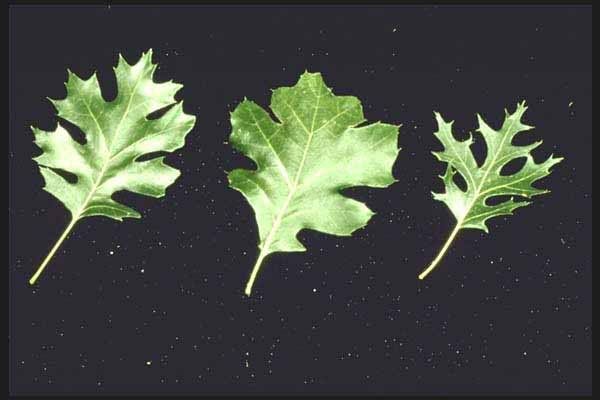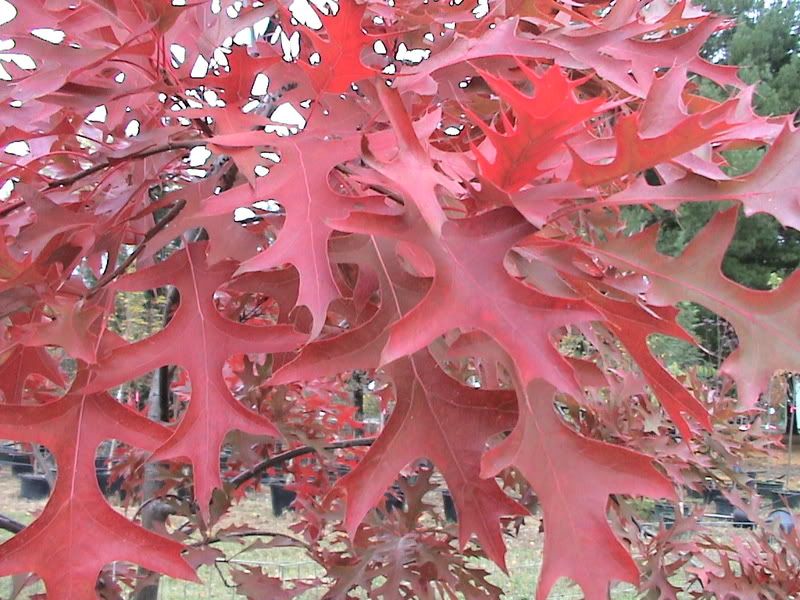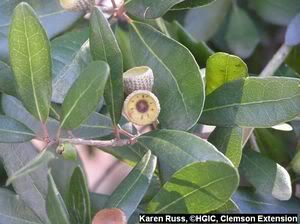Mast crops
#1
Some may find this interesting. Others will find it "old hat". Take what you will/want from this.
Got into a really good article on acorns, yesterday. It was describing the whitetail’s preferred choice of mast crops….and touting the importance of being able to identify the different species….in order to stack the odds more in the favor of the hunter, when hunting these food sources (THE preferred food source of the whitetail deer).
Some of you will find this “elementary”. I did, to an extent. I also learned something, reading it.
Whitetails prefer acorns with the least amount of tannic acid. In order of (least to most) content…..they are as follows:
White Oaks
Water (Pin) Oaks
Red Oaks
Bur Oaks
Black Oaks
Live Oaks
What really made sense is understanding that they will deplete these resources in that order (according to the article). What wasn’t mentioned, though…..is something I thought might also play into the equation…..”Cover”. It would make sense, to me, that the amount of “cover” …..or how secure the deer felt while feeding, might also play into this. For example…..a secluded red oak flat “might” (in my eyes) be preferred over a less secluded water oak flat (You can do the endless scenarios in your head with the rest of the “scenarios”).
“Food” for thought with the season looming.
Here are some photos....in no particular order......
White Oak

Red; Black and Northern Oak

Pin Oak

Live Oak

Bur Oak

I expect someone to set me straight on these photos if you find them to be inaccurate. I spent only a short few minutes searching them out.
Got into a really good article on acorns, yesterday. It was describing the whitetail’s preferred choice of mast crops….and touting the importance of being able to identify the different species….in order to stack the odds more in the favor of the hunter, when hunting these food sources (THE preferred food source of the whitetail deer).
Some of you will find this “elementary”. I did, to an extent. I also learned something, reading it.
Whitetails prefer acorns with the least amount of tannic acid. In order of (least to most) content…..they are as follows:
White Oaks
Water (Pin) Oaks
Red Oaks
Bur Oaks
Black Oaks
Live Oaks
What really made sense is understanding that they will deplete these resources in that order (according to the article). What wasn’t mentioned, though…..is something I thought might also play into the equation…..”Cover”. It would make sense, to me, that the amount of “cover” …..or how secure the deer felt while feeding, might also play into this. For example…..a secluded red oak flat “might” (in my eyes) be preferred over a less secluded water oak flat (You can do the endless scenarios in your head with the rest of the “scenarios”).
“Food” for thought with the season looming.
Here are some photos....in no particular order......
White Oak

Red; Black and Northern Oak

Pin Oak

Live Oak

Bur Oak

I expect someone to set me straight on these photos if you find them to be inaccurate. I spent only a short few minutes searching them out.
#2
If you have whites and reds on the same piece of property they will fill there guts with whites first.
They can sit and chew that cud (4 chambered stomach)and hit the whites again at night if it is not secluded.
Thanks for the refresher though I always get those dang leaves mixed up when I first
look at them every fall.
They can sit and chew that cud (4 chambered stomach)and hit the whites again at night if it is not secluded.
Thanks for the refresher though I always get those dang leaves mixed up when I first
look at them every fall.
#7
Giant Nontypical
Join Date: Nov 2004
Posts: 5,425
It's funny, kinda like speckled perch or crappie...
Some oaks have regional names...Seems I've always calleda live oak a pin oak...And what I've always called a chestnut oak isn't pictured, even though it's pretty common here in central NC...
Another reminder...Deer also love beech nuts...
Some oaks have regional names...Seems I've always calleda live oak a pin oak...And what I've always called a chestnut oak isn't pictured, even though it's pretty common here in central NC...
Another reminder...Deer also love beech nuts...
#9
Great Topic Jeff.
Here's some stuff that I posted last year that's probably relevant to this discussion (some of it justre-hashes what you posted above):
Crash Course: Most people don't know the difference between a red and a white oak, and what makes each tree unique. This little distinction can be the difference between you tagging out, and you eating tag soup. So here we go... For now, we're just focusing on the Reds.
Red Oaks have pointy leaf tipsand rounded acorns.

White Oaks have rounded tips on theleaves and oblongfruits.

Most wild Red Oaks do not produceacorns on an annual basis. Instead, a red oak mayexperience a2-7 year hiatus between solid bumper crops. So, one hot red oak stand won't necessarily be a heavy feeding area year-in, year-out. Acorn production is highly variable, and is rarely predictable. The reasons are many:tree age, diameter, crown characteristics, genetics,rainfall, and the natural acorn production cycle all play a certain factor. This is where preseason scouting pays dividends. Pay attention to where the reds in your deer woods are producing. There may only be a few trees in the area that are sporting a heavy hard mast. If this is the case - you're in business.
Start mapping your areas out now - know where the reds are located and make notes. Next summer, take an inventory of those trees and see which ones, if any, are producing.
Red Oaksabsorb significant amounts of tannic acid during those long gaps between acorn production, and thoseacidic flavors are passed on to theRed Oak's fruit.That makes them more bitter in taste than the whites,which also makes themthe second choice of hungry whitetails. If you've ever tasted a red oak acorn and a white oak acorn - the difference is easily distinguishable. Red acornstaste bitter. White Oak acorns, in contrast, aren't bitter at all. There is no real difference in nutritional value - just taste.
Maximum acorn production occurs in reds that are 40-60 cm in diameter, and between 50 and 100 years old. Those trees with the wide, dominant crowns and receiving good light and moisture will be the heaviest mast producers.
If a given stand of oaks, for some reason or another, enters a period of non-production or limited production, the regeneration of that stand will suffer. Red Oaks require significant consistent acorn production over the long-term to re-seed the area successfully.
Seriously... Nothing makes my heart skip a beat like beating the shoeleather all day, scouring a huge expanse of hardwoods, seeing tree after tree after tree with no fresh mast and a forest floor of nothing but ancient, half-rotten caps, thencruising intoan isolated point or bench, and seeing those fresh green caps strewn all over the ground like a barnyard. That's where the game starts.
More info: Check this link out.
http://ncrs.fs.fed.us/pubs/jrnl/1995/nc_1995_Dey_001.pdf
__________________________________________________ ____________
Deer prefer whites. If you ever have the opportunity, eat one of each and you'll see why. Reds are bitter, and they taste wretched. Whites are a lot more palatable.
Whites, like Reds, can produce acorns annually - but here again - it's governed by external factors. From what I understand, it's not as rare to find a wild white oak (compared to a red)that produces annually.
Let's talk about this notion that "you know of atree that produces acorns every year"- some trees will set anddrop somefruit annually, but there's usually a gap between bumper crops. "Yard trees" are a bad example to follow, b/c they are perfectly crowned and recieve much more sunlight than your average tree in a hardwood forest with a high, heavy canopy. This lack of competition and ideal growing conditions provide for a tree that can dump out a heavy mast crop EVERY year.
The competitive stress of growth within a deciduous canopycauses many reds to abort the seeding process, and conserve the nutrients to nourish the plant internally. From what I gather, acorn production really depletes the tree's nitrogen supply, and that puts the tree at risk of death if it overproduces.A wild tree in the forest is subject to significant amounts of competitive stress, which make it behave substantially different than, say, a lone tree in an open lot. They "store" nutrients and expend it by producing mastsporadically.
That's why reds along field edges are sometimes the best producers in a woodlot - their crowns are lush and can reach out over the field to collect light along the edges.
Frosts during the flowering process can really damage the acorn crop, as well.
Here's some more raw linkage for anyone interested in such nerdy things.
http://www.utextension.utk.edu/publications/wfiles/W126.pdf
Another interesting tidbit: Every oak tree will produce both male and female flowers, so it does not need another tree to pollenate.
Female Flowers
[align=left] [/align]
[/align]
Male Flowers

Here's some stuff that I posted last year that's probably relevant to this discussion (some of it justre-hashes what you posted above):
Crash Course: Most people don't know the difference between a red and a white oak, and what makes each tree unique. This little distinction can be the difference between you tagging out, and you eating tag soup. So here we go... For now, we're just focusing on the Reds.
Red Oaks have pointy leaf tipsand rounded acorns.

White Oaks have rounded tips on theleaves and oblongfruits.

Most wild Red Oaks do not produceacorns on an annual basis. Instead, a red oak mayexperience a2-7 year hiatus between solid bumper crops. So, one hot red oak stand won't necessarily be a heavy feeding area year-in, year-out. Acorn production is highly variable, and is rarely predictable. The reasons are many:tree age, diameter, crown characteristics, genetics,rainfall, and the natural acorn production cycle all play a certain factor. This is where preseason scouting pays dividends. Pay attention to where the reds in your deer woods are producing. There may only be a few trees in the area that are sporting a heavy hard mast. If this is the case - you're in business.
Start mapping your areas out now - know where the reds are located and make notes. Next summer, take an inventory of those trees and see which ones, if any, are producing.
Red Oaksabsorb significant amounts of tannic acid during those long gaps between acorn production, and thoseacidic flavors are passed on to theRed Oak's fruit.That makes them more bitter in taste than the whites,which also makes themthe second choice of hungry whitetails. If you've ever tasted a red oak acorn and a white oak acorn - the difference is easily distinguishable. Red acornstaste bitter. White Oak acorns, in contrast, aren't bitter at all. There is no real difference in nutritional value - just taste.
Maximum acorn production occurs in reds that are 40-60 cm in diameter, and between 50 and 100 years old. Those trees with the wide, dominant crowns and receiving good light and moisture will be the heaviest mast producers.
If a given stand of oaks, for some reason or another, enters a period of non-production or limited production, the regeneration of that stand will suffer. Red Oaks require significant consistent acorn production over the long-term to re-seed the area successfully.
Seriously... Nothing makes my heart skip a beat like beating the shoeleather all day, scouring a huge expanse of hardwoods, seeing tree after tree after tree with no fresh mast and a forest floor of nothing but ancient, half-rotten caps, thencruising intoan isolated point or bench, and seeing those fresh green caps strewn all over the ground like a barnyard. That's where the game starts.
More info: Check this link out.
http://ncrs.fs.fed.us/pubs/jrnl/1995/nc_1995_Dey_001.pdf
__________________________________________________ ____________
Deer prefer whites. If you ever have the opportunity, eat one of each and you'll see why. Reds are bitter, and they taste wretched. Whites are a lot more palatable.
Whites, like Reds, can produce acorns annually - but here again - it's governed by external factors. From what I understand, it's not as rare to find a wild white oak (compared to a red)that produces annually.
Let's talk about this notion that "you know of atree that produces acorns every year"- some trees will set anddrop somefruit annually, but there's usually a gap between bumper crops. "Yard trees" are a bad example to follow, b/c they are perfectly crowned and recieve much more sunlight than your average tree in a hardwood forest with a high, heavy canopy. This lack of competition and ideal growing conditions provide for a tree that can dump out a heavy mast crop EVERY year.
The competitive stress of growth within a deciduous canopycauses many reds to abort the seeding process, and conserve the nutrients to nourish the plant internally. From what I gather, acorn production really depletes the tree's nitrogen supply, and that puts the tree at risk of death if it overproduces.A wild tree in the forest is subject to significant amounts of competitive stress, which make it behave substantially different than, say, a lone tree in an open lot. They "store" nutrients and expend it by producing mastsporadically.
That's why reds along field edges are sometimes the best producers in a woodlot - their crowns are lush and can reach out over the field to collect light along the edges.
Frosts during the flowering process can really damage the acorn crop, as well.
Here's some more raw linkage for anyone interested in such nerdy things.
http://www.utextension.utk.edu/publications/wfiles/W126.pdf
Another interesting tidbit: Every oak tree will produce both male and female flowers, so it does not need another tree to pollenate.
Female Flowers
[align=left]
 [/align]
[/align] Male Flowers





